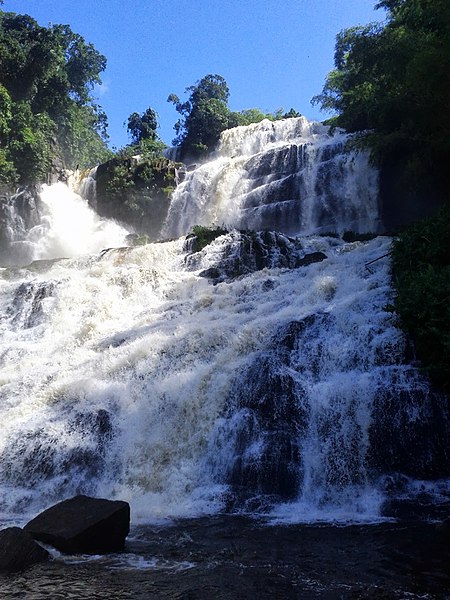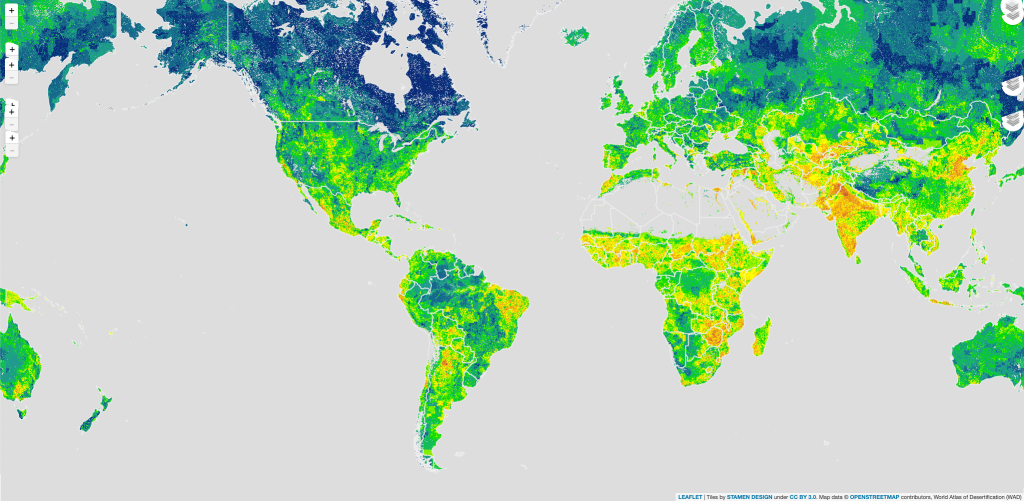Chapter 11: Economy and Development
11.10 Development and Environmental Consequences
Development efforts in lower-income countries often focus on multiple key areas to promote sustainable growth and improve living standards. These efforts typically include investments in infrastructure, such as roads, electricity, and water supply, to enhance connectivity and access to essential services. Education and healthcare improvements are also critical, aimed at building a skilled workforce and ensuring a healthy population. Economic development strategies frequently involve supporting agriculture, industry, and tourism to create jobs and diversify the economy. Additionally, international aid and partnerships play a significant role, providing financial resources, technical expertise, and capacity building.
Economic development alters landscapes as productivity, whether in industry or agriculture, prompts environmental transformations. Industrialization frequently leads to heightened pollution levels in air and water. Meanwhile, intensive agriculture’s reliance on pesticides and herbicides adversely affects soil quality and groundwater. Similarly, tourism strains infrastructure, surpassing its limits and burdening the environment. The impacts of tourism extend beyond environmental concerns, affecting lifestyles and fundamentally reshaping cultural landscapes.
11.10.1 Intensification of Agriculture
Intensified agriculture in lower income countries offers several pros and cons. On the positive side, it can significantly increase crop yields and food production, helping to address food security and reduce hunger. By adopting modern farming techniques, such as improved seed varieties, irrigation, and the use of fertilizers and pesticides, farmers can achieve higher productivity and profitability. This can lead to economic growth, job creation, and improved livelihoods for rural communities. Additionally, intensified agriculture can stimulate related sectors, such as transportation and food processing, further boosting the local economy.
However, there are also considerable drawbacks. Intensified agriculture often relies heavily on chemical inputs, which can lead to soil degradation, water contamination, and loss of biodiversity. The focus on monoculture crops – the cultivation of a single crop in a given area.- can make farming systems more vulnerable to pests, diseases, and market fluctuations.
Rubber Plantations – Monocultures

Source: “Rubber plantation in Ghana” from USGS is in the public domain.
The growing demand for rubber, primarily used in the production of over 2 billion tires annually, is a significant but often overlooked driver of tropical deforestation. Recent analysis reveals that rubber plantations are causing severe environmental damage, as seen in Cambodia, West Africa, and Indonesia, where natural forests are being cleared for rubber cultivation. Despite its substantial impact, rubber has not faced the same scrutiny as other tropical commodities like palm oil or cocoa. The situation is expected to worsen with the rise of electric vehicles, which, being heavier and causing faster tire wear, could further increase rubber demand. Despite its environmental toll, rubber’s role in deforestation remains largely unaddressed in public and regulatory discourse.
Counteracting the Devastating Effects of Monoculture

Source: “Itacaré – panoramio” by antigerme via Wikimedia Commons is licensed under CC BY 3.0.
Rubber tree plantations, such as those operated by Michelin, traditionally consist primarily of a single tree species, Hevea brasiliensis, which is the primary source of natural rubber. However, Michelin has been incorporating more sustainable and biodiversity-friendly practices in its plantations.
Monoculture Plantations
- Single-Species Focus: Historically, rubber plantations have focused on monoculture, planting vast areas with Hevea brasiliensis to maximize rubber production efficiency.
Sustainable Practices
- Biodiversity Initiatives: In recent years, Michelin and other companies have made efforts to integrate biodiversity into their plantations. This includes establishing ecological reserves and corridors, planting native species, and maintaining patches of natural forest within or around the plantation areas.
- Michelin’s Efforts in Brazil: In the Bahia region of Brazil, Michelin set up the Michelin Ecological Reserve in 2003, which aims to preserve the local ecosystem by protecting native flora and fauna and encouraging biodiversity alongside their rubber production.
By integrating these practices, companies like Michelin aim to reduce the environmental impact of rubber production and promote a more sustainable approach to managing rubber tree plantations.
Furthermore, the increased demand for water and land can exacerbate resource scarcity and contribute to environmental degradation, including deforestation and depletion of water sources. Let’s use China as an example here: despite ongoing efforts, particularly in the twenty-first century, to address the challenges stemming from rapid industrialization, urbanization, chemical-intensive farming practices, and inadequate sewage and industrial waste treatment, China has struggled to improve the quality of its water supplies. Chinese farmers use significantly higher amounts of fertilizer and pesticides compared to their American counterparts, yet achieve lower productivity. The People’s Republic of China (PRC) opted for increasing agricultural production without prioritizing sustainable practices due to concerns over food shortages. Consequently, up to two-thirds of irrigated lands in northern China suffer from salinization, exacerbated by insufficient drainage in naturally arid areas.
In addition, China stands out as the foremost consumer nation linking its imports to extensive deforestation and peat-related emissions abroad (see Figure 11.10.3). Research conducted in Brazil highlights that exports of soybeans and meat to China play a pivotal role in driving deforestation in key regions, including the Amazon, the largest rainforest globally, and the Atlantic forest, the second-largest.

Source: “Drivers-of-forest-loss-in-the-Brazilean-Amazon” by Max Roser via Wikimedia Commons is licensed under CC BY-SA 4.0.
Socially, the benefits of intensified agriculture are not always evenly distributed; smallholder farmers may struggle to compete with larger, industrialized farms, leading to increased inequality and potential displacement of local communities.

Source: “Farmer suicide” by Chaser9 via Wikimedia Commons is licensed under CC BY-SA 4.0.
Take, for instance, the example the social cost that many farmers in northern India pay for farming in an area that sees a lot of commercialized agriculture. See Figure 11.10.5[1] Here, the issue of small-scale farmers committing suicide has been a tragic and complex phenomenon. Over the past few decades, particularly since the 1990s, there has been a disturbing trend of farmers taking their own lives, often due to economic distress and debt burdens. Several factors contribute to this distress. Small-scale farmers face numerous challenges, including unpredictable weather patterns, crop failures, high input costs for seeds, fertilizers, and pesticides, and fluctuating market prices for agricultural produce. Additionally, lack of access to affordable credit and insurance, coupled with inadequate government support systems, exacerbates their financial vulnerabilities.
The shift towards cash crops and intensive farming practices has further strained these farmers, leading to increased indebtedness and inability to repay loans. Social factors such as stigma associated with debt, mental health issues, and social isolation also contribute to the high suicide rates among farmers. Despite various government initiatives and relief measures aimed at addressing these issues, the underlying structural challenges persist, highlighting the need for comprehensive reforms in agricultural policies, financial support mechanisms, and mental health services to alleviate the plight of small-scale farmers in India.
Desertification due to intensifying farming is another critical environmental issue affecting many regions globally. As agricultural practices intensify to meet growing food demands, particularly in arid and semi-arid areas, several factors contribute to desertification. These include overgrazing, deforestation for agricultural expansion, and unsustainable irrigation practices.

Map showing “convergence of evidence” of 14 land degradation risks from the third edition of the World Atlas of Desertification (WAD). Shading indicates the number of coincident risks. The areas with the fewest are shown in blue, which then increase through green, yellow, orange and the most in red.
Source: “Convergence of Global Change Issues” via World Atlas of Desertification is licensed under CC BY 3.0.
Figure 11.10.5 displays areas where the most land degradation risks converge. Shading indicates the number of coincident risks. The areas with the fewest are shown in blue, which then increase through green, yellow, orange and the most in red. The global map shown here does NOT represent land degradation. Rather, it illustrates the convergence of evidence of global change issues relevant to land degradation. The world atlas of desertification considers a set of “14 factors responsible for land degradation such as aridity, livestock density, tree loss and decreasing land productivity. Click on the map for a closer look.
Intensive farming often involves monoculture and continuous cropping, which depletes soil nutrients and increases vulnerability to erosion. The use of chemical fertilizers and pesticides can also degrade soil quality over time, reducing its ability to retain moisture and support vegetation. As vegetation cover diminishes and soil erosion accelerates, land degradation progresses, leading to the transformation of fertile lands into desert-like conditions.
The consequences of desertification are profound, affecting local communities by reducing agricultural productivity, compromising water resources, and exacerbating poverty and food insecurity. Addressing desertification requires adopting sustainable land management practices, such as agroforestry, soil conservation techniques, and improved water management strategies. International cooperation and policy frameworks are also essential to mitigate the impacts of desertification and promote sustainable development in vulnerable regions.
Balancing the benefits of intensified agriculture with its environmental and social costs requires careful planning and the adoption of sustainable practices, such as integrated pest management, crop diversification, and conservation agriculture. These measures can help mitigate negative impacts while maximizing the positive outcomes of agricultural intensification.
11.10.2 Increased industrial activity
Industrialization can stimulate economic growth by creating jobs, fostering technological advancements, and attracting foreign investment. This can, again, contribute to poverty reduction and improve living standards for local populations. Industrialization also supports the development of infrastructure, such as transportation networks and utilities, which can further enhance economic productivity and connectivity.
Environmental degradation linked to industries owned by foreign entities, such as those seen in Thailand and other low income countries, can stem from the fact that they often prioritize cost-efficiency and production volume, often at the expense of environmental considerations. This can lead to practices like inadequate waste management, emissions of pollutants, and improper disposal of hazardous materials. Also, the pursuit of rapid industrialization may prompt local governments to relax environmental regulations or enforcement, further exacerbating environmental impacts. The cumulative effect includes air and water pollution, soil contamination, and habitat destruction, which can harm local ecosystems and jeopardize public health.
However, there are significant drawbacks to increased industrial activity. Environmental degradation is a major concern, as industrial processes often lead to pollution of air, water, and soil. This can have detrimental effects on public health, ecosystem integrity, and biodiversity. Moreover, rapid industrialization can exacerbate resource depletion and contribute to climate change through increased greenhouse gas emissions and energy consumption. Socially, industrialization may lead to issues such as labor exploitation, poor working conditions, and income inequality if not accompanied by adequate labor rights and social protections.
Additionally, the dependence on industrial sectors for economic growth can make countries vulnerable to global economic downturns and market fluctuations. This economic volatility can hinder sustainable development efforts and exacerbate social inequalities. Therefore, balancing the benefits of industrialization with its environmental and social costs requires effective governance, stringent environmental regulations, investment in clean technologies, and inclusive development policies that prioritize social equity and environmental sustainability.
11.10.3 Tourism
Many developing countries choose tourism as a key industry due to its potential to stimulate economic growth, create employment opportunities, and attract foreign investment. Tourism can be a relatively quick and effective way to generate revenue and improve infrastructure, such as roads, airports, and hotels. It also promotes cultural exchange and can enhance the global profile of a country. However, while tourism can drive development, it must be managed sustainably to avoid negative impacts such as environmental degradation, cultural commodification, and economic dependency on a fluctuating industry. Sustainable tourism practices are essential to ensure long-term benefits for both the environment and local communities.
Tourism in The Gambia

Source: “Georgetown tourist boat” by Ikiwaner via Wikimedia Commons is licensed under CC BY-SA 3.0.
The Gambia may serve as an example for both positive and negative impacts of the industry in a lower income, tropical region with wonderful nature. Known for its beautiful beaches, vibrant culture, and rich biodiversity, The Gambia attracts a significant number of tourists each year, contributing substantially to the national economy. The tourism sector creates jobs, generates revenue, and supports local businesses, which can lead to improved infrastructure and services.
According to the Gambia Tourism Board The Gambia proudly boasts of being the second country in the world to develop a Responsible Tourism Policy. Their position as a leader in Responsible Tourism is demonstrated in the number of global awards won by various individuals and organizations.
The country’s Responsible Tourism Policy states the following: “Tourism is important in The Gambia. The government’s policy is to promote tourism and its contribution to economic growth. Our objective is to increase the contribution of tourism to our economy and to raise the living standards of Gambians. The government is continuing its efforts to broaden the tourism market, improve quality standards, and ensure rational use of the Tourism Development Area.”

Source: “People tourists in swimming pool hotel Gambia” by Peter van der Sluijs via Wikimedia Commons is licensed under CC BY-SA 3.0.
Obviously, the development of resorts and other tourist facilities leads to habitat destruction and coastal erosion, threatening the country’s fragile ecosystems. Increased tourist activity can result in pollution, such as litter on beaches and pollution of waterways, which affects both marine life and local communities. The demand for water and energy in tourist areas can strain local resources, leading to shortages and higher costs for residents.
In addition, here and often elsewhere tourism is seasonal; in The Gambia it is highly seasonal due to its climate. The peak tourist season typically runs from November to April, which coincides with the dry season when the weather is more favorable with less rain and milder temperatures. During these months, the country sees a significant influx of visitors, primarily from Europe, who are escaping the cold winter months. This seasonality presents several challenges. For example, many tourism-related businesses and employees depend heavily on the income generated during these peak months to sustain them through the off-season. This can lead to economic instability and job insecurity for those working in the tourism sector. Additionally, the concentration of tourist activity during a few months of the year can put intense pressure on local infrastructure, resources, and the environment, leading to issues such as overcrowding, resource depletion, and environmental degradation.

Source: “DiolaBaila” by KaBa (KaaBaa) via Wikimedia Commons is licensed under CC BY 3.0.
Economically, while tourism provides essential income, much of the profit is captured by foreign-owned businesses, with limited financial benefits reaching the local population. This can exacerbate income inequality and create economic dependency on a volatile industry subject to global economic shifts and political instability.
Socially, tourism in The Gambia can lead to cultural commodification, where traditional practices and festivals are adapted to appeal to tourists, potentially eroding their authenticity. The influx of tourists can disrupt local lifestyles and increase the cost of living, making it difficult for residents to afford housing and basic services.
Efforts to extend the tourist season and attract visitors year-round are ongoing, but the inherent climatic conditions make it challenging to overcome the seasonal nature of tourism in The Gambia. Sustainable tourism strategies and diversification of the economy are essential to mitigate the adverse effects of this seasonality.
The Gambia only serves as an example, a positive example, for the many countries that offer their countries to be toured and visited. Spain is a country that opened its doors wide to mass tourism in the mid-20th century. Here, tourism particularly along its coastal regions, has led to significant economic benefits but also notable environmental and aesthetic issues. The rapid development of the Costa del Sol and other popular areas has resulted in densely built-up coastlines with numerous high-rise hotels and resorts, often criticized for their lack of aesthetic appeal and harmony with the natural environment. This hasty construction has led to the degradation of natural landscapes, loss of biodiversity, and strain on local resources such as water and waste management systems. While tourism remains a vital part of Spain’s economy, there is increasing recognition of the need for more sustainable and aesthetically considerate development practices to preserve the country’s natural beauty and ensure long-term environmental and economic health.
- Gruère, G. & Sengupta, D. (2011), Bt cotton and farmer suicides in India: an evidence-based assessment, The Journal of Development Studies, 47(2), pp. 316–337 ↵

